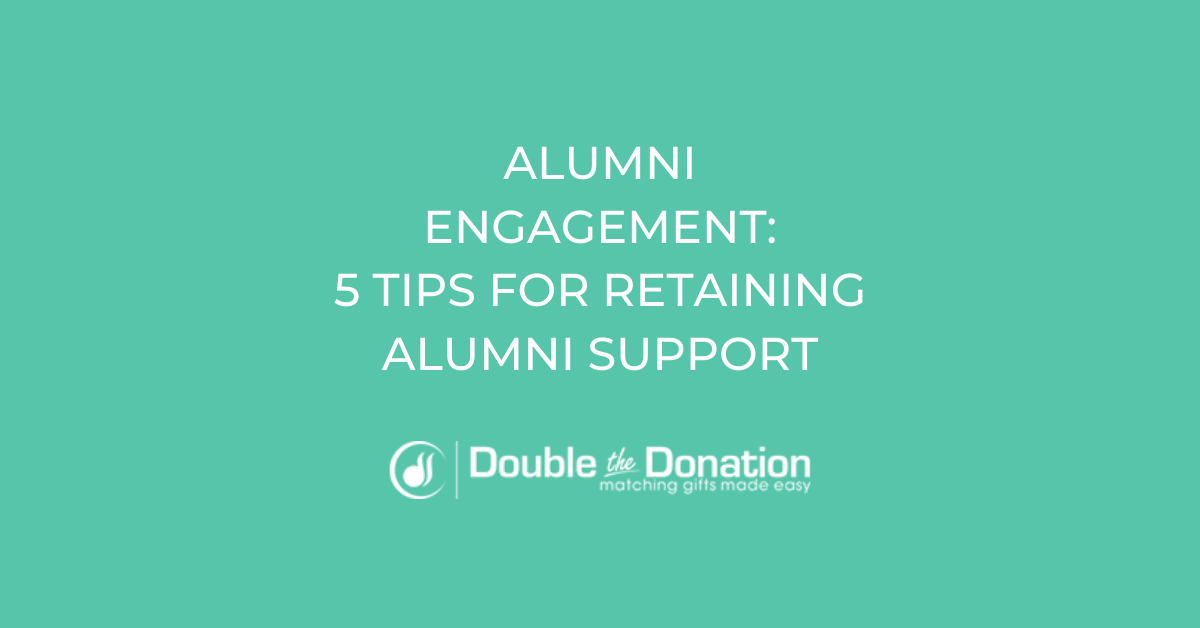min read
We have all heard about the need to make “data-driven decisions” in our organizations. This sounds great; of course we want to use information to make informed choices. But with so much data available, how can it be utilized to connect donors to what they care about most? The answer is simple: we need to listen.
In this blog, we’ll review methods to track areas of interest across different initiative types, fundraising strategies to narrow in on donor passions, and how to leverage affinity tagging for long-term retention.
Foundation

Modern donors expect organizations to know what they want, and to be presented with tailored opportunities. With the Amazon shopping experience and “you might like these” purchase suggestions, your constituents are accustomed to customization and easy follow-up experiences. Consider the following steps to leverage your data to maximize donor retention and build meaningful relationships with your constituents.
Tracking Areas of Interest

When a donor makes a gift, they are raising their hand and telling you what they care about. It is vitally important that we listen and react accordingly. The first step to making this a reality is to track donor interest. In most CRMs, there is a way to tag individual constituents or designation codes with donor interests or topics. Take time to consider what you know about your donors, what your organization caters to, and your brand. Use this to create a list of topic categories that your giving designations, events, and general constituents interests could fall under.
If you are part of a larger organization such as a university and have a wider array of topics, try keeping the categories somewhat more generalized, while still getting at the root of interest. These can be things such as sustainability, justice, research, arts, humanities, et cetera.
If you are part of a smaller organization that is more specific, dive into topic areas. Your donors may have a specific interest which led them to begin supporting you. Let’s take a marine conservation organization, for example. You could have different interest tags such as sea otters, dolphins, pollution, etc. Remember, donors don’t have to have just one tag; humans are multi-faceted and often have a variety of interests. The goal of this tagging project is to narrow down what you are communicating to your donor, showing them relevant content and opportunities for engagement.
Once you have your all-encompassing list, assign the topics to your designations. If your system allows, populate your individual donor entities with the assigned designation tags. The goal is to identify topical interests and have that on file for your constituents.
Strategies to Uncover Donor Interests

In order to learn what your donors are interested in, they need to be presented with options and the opportunity to self-select. It’s natural to guess what someone may have an affinity to, but it doesn’t always show the full picture. While I studied psychology during my undergraduate career, I am much more likely to donate to a project that supports students doing research on sustainability. If my alma mater only ever asked me to support my major or division, because that was all they knew about me, I would most likely not participate. Your organization needs to dig deeper and allow constituents to support what they care about. If you never present the opportunity to pick and choose, you are missing out on a plethora of information.
Menu
One way to gather information is to have a menu of giving options during a Giving Day. You can outwardly organize your content into the topic tags you decided upon earlier, or have that as a behind-the-scenes tracking element. Either way, give your community a full range of topics to choose from. This marketplace approach allows your donors to browse and show you what they care about.
Crowdfunding
One-off crowdfunding projects are another great way to identify people interested in specific topic areas. Empowering smaller projects and allowing them to reach out to natural networks will bring people out of the woodwork and open the door for further conversations.
Crowdfunding and Giving Days are powerful tools for donor acquisition, sparking interest in giving to places they may not have known existed, or connecting them to projects we didn’t know they were affiliated with.
Ask
Another approach to learn about donor interest is to simply ask them. You could do this in two ways: One way to learn about affinity is to ask them to donate to what they care about most, unleashing your full search bar of designation options. Another is to conduct a survey that does not ask them to give, but simply requesting they tell you about what they are most passionate about or why they support your organization. If possible, make this as simple as possible and ask them to select from a list. This will make it easier for you to direct it back to your database, but people are more likely to participate if they just have to click as opposed to typing something in.
While we’ve mostly covered designations and giving opportunities, there is room to expand this tracking system. Consider adding these topical tags to your events as well. If someone takes the time to go out of their way and attend an event, it is likely they are interested in the topic presented. This won’t apply to all activities, but there are opportunities to tag things such as lectures or volunteer experiences.
Leveraging Donor Interest Tags

So you’ve executed Giving Days with a variety of projects, run successful crowdfunding campaigns, and have an optimized giving form with a plethora of designation options. You have a database full of information about your donors with identified interest tags. What can you do with all this data, and how can it inform your next move?
Consider the following options for follow up activities based on the tag information you have collected. These can be one-off activities, or fully fleshed out campaigns.
The “we thought you might like…” campaign
- Use your affinity tags to send donors or event attendees projects that contain the same category identification. You can mention their previous engagement activity, and let them know that they might like this new project as it is the same topic. Try using tokens in your email to directly call out the last thing they supported so it is easy for your donor to see the connection.
The curated list
- If you have an upcoming Giving Day, use the tags to send a curated list of new projects that are related to their topical interests of your donors. If your giving event has a large number of projects, it could be helpful to have a go-to list to keep an eye out for.
The unrestricted transition
- Sometimes organizations need to raise money for unrestricted funds, and telling a story behind these pots of money can be difficult. One approach to direct funds from niche areas to general funds can be to discuss how the project a donor supported actually falls under a larger umbrella. Show your donors how the overarching fund makes things like the supported project possible, and encourage them to make a gift to the general fund
The major gift prospect play
- Sometimes a prospect is rated as being capable of giving a major gift, but has yet to make a large contribution, or anything at all. Your major gift officers may have sent them a variety of communications and giving opportunities, but to no avail. Giving Days can provide valuable information about these people if they make a gift to a specific project, especially if it is not something that would be assumed they have an interest in. This gift can be used to create a strategy around what the donor is actually interested in. Allow your major donor to connect with that project to have meaningful interactions with the project team. If this takes place at a university, your donor may be more interested in the authentic story of a student team they participated in while they were in school as opposed to the university-branded messaging. The generalized campaign approach can be used as a transitional tool for these donors as well.
The invitation
- Beyond giving opportunities, don’t forget about other types of engagement. You could use these tags to invite constituents to tailored-topic based events. If they gave to a performance arts project, they may be interested in coming to the next play you host. Is there a volunteer stage-building day? These donors would be great people to invite. Do you have a theater arts newsletter? Suggest they join to stay up-to-date with everything happening in the arts at your organization.
While affinity tags are a way to get to know your donors better, this approach is not an exact science. Your donors may be one-off givers that only supported a project because of a certain individual involved, and don’t care about your other activities. That’s fine. The goal here is to learn about your community and how to continue to engage those that are willing and interested in what you have to say.
Taking this approach will help you build stronger relationships and show donors that you are listening and care about what they have an affinity towards. While this may take some time to implement at your organization, it is worth the investment and will ultimately lead to stronger retention of your donors.







